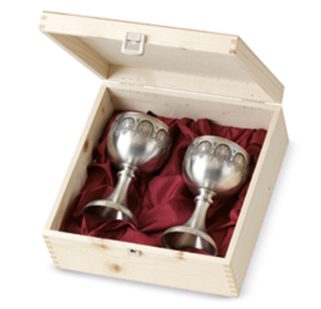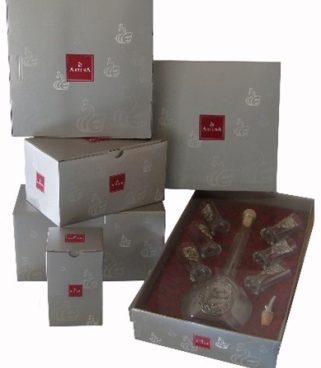The creation of artwork
Weeks of the highest creativity and manual activities often pass from the drawing to the mold. The attention to detail and quality has its origin here. A quality casting, as we understand it, is only possible when the mold is 100% perfect.
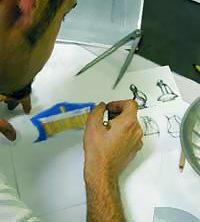
At the beginning of every development there is a sketch. Based on this drawing, the final decision regarding mold and motif is made.
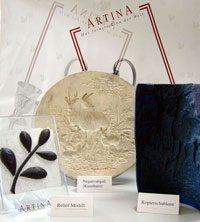
In the next step, the desired motif is modeled with plasticine and cast in synthetic resin. Then the engraving is transferred from the plastic cast into the steel mold.
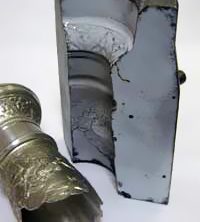
The final mold is made of high-quality tool steel and consists of at least two parts. The relief scene is negatively engraved in these parts.
The casting-process
Manual chill casting
Before the first casting, the molds are coated with a so-called “mold coating”, which prevents the liquid pewter from sticking to the mold material and the casting from being destroyed when the mold is opened. Once the mold has been prepared for casting, it is heated to prevent the molten metal from solidifying too quickly. The liquid metal is located in a crucible in the immediate vicinity, which the caster pours into the mold after stirring it carefully with a trowel. During the actual casting, the experience and skill of the foundryman are decisive for the quality of the finished casting. The caster has to know how fast he has to pour a certain mold in order to achieve an optimal filling of the mold down to the smallest decorations, and on the other hand he must also know whether and how quickly he will cool the mold and its contents after casting. After the casting has solidified in the mold, it is opened and the part removed. The raw casting is ready.

Centrifugal casting
Another variant of pewter processing is centrifugal casting. The process is almost identical to honey extraction. The molds are installed in a centrifuge with a central sprue. Once the centrifuge has reached its full speed, the liquid pewter is poured in via this sprue and distributed very quickly into all cavities by the centrifugal force. Today pewter figures, handles, small parts, plaques and costume jewelry are made using this process.

tDiecast
The die casting process is one of the most interesting new developments in the casting of pewter articles. In this process, the caster puts the tin blocks in the crucible
melting furnace that is attached to the die-casting machine. As soon as the pewter melt has reached a temperature of approx. 280 ° C, the raw material is pourable. First, the molded parts built into the machine are closed. Then the
heated pewter is pressed into the mold with very high pressure. After a short cooling time, which is accelerated by water cooling, the mold opens and the cast part can be removed. The great advantage of die casting, in addition to
the economical production, is, above all, the very fine and detailed reproduction of the engraving.
of using dummy text for your paragraph is that it has a more-or-less normal distribution of letters. making it look like readable English.
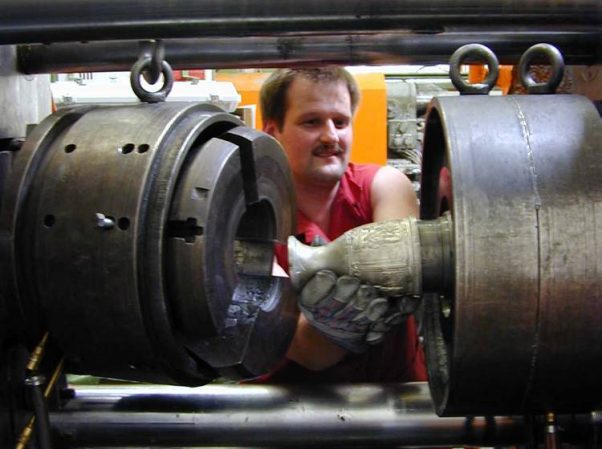
The finishing touch
After casting, the cast blank goes to the spinning machine. There it is freed from superfluous burrs
and given a perfect and clean surface. The lathe operator uses copy-lathes or the most modern CNC-lathes for this purpose. This gives the casting its final weight and appearance. In the case of jugs, tankards and the like, the handles
or lids are now soldered on by hand. This is followed by the polishing which allows the elaborate reliefs to really come into their own. Brushes, cloth discs, scotch and liquid polish turn the artwork into a unique masterpiece.


Packaging
ARTINA attaches great importance to environmentally friendly and high-quality packaging. Whether it's
renewable raw material for the wooden boxes or recycled paper from which attractive gift wrapping is made - the masterpiece from the ARTINA manufactory is always in a special cover.
